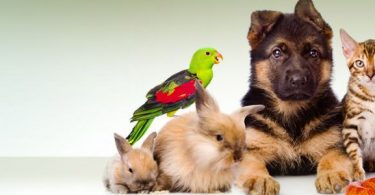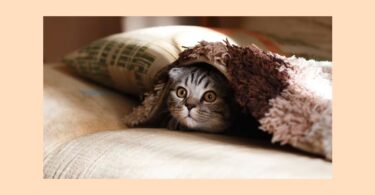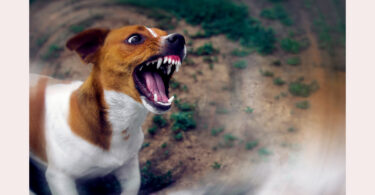Translated by Katja Schütt and Alan Schmukler
Résumé
The objective of this work is to demonstrate the practical importance of a method proposed by Dr. Masi Elizalde, which allows us to understand symptoms in a dynamic way. With this method we can understand the sense and function of each symptom, and thereby the cause of the disease.
The knowledge of miasms permits us to follow the evolution of the case and whether its development is towards cure. This method also allows us to treat every species of animal, and to offer them a better quality of life.
This case begins with the choice of a remedy according to the symptoms which include : Resentment about past unpleasant occurrences, aversion to company, emaciation and sadness. During the evolution of the case the chosen remedy was confirmed as correct. It solved the clinical ailments of the patient and also had a dynamic correspondence with the patient’s theme.
One day this chicken started to withdraw and did not eat from the owner’s hand anymore. She accepted food only if her owner threw it on the ground, and even then she did not eat much.
Natrum muriaticum has this theme of independence. In order to preserve her life she does not want to be dependent (on the conservative power of a God who gives out of mercy). She wants to preserve herself.
At another moment of her life she presented the following behavior: She began to take care of the dogs, to lie down with them, and to look after them. She tried to put them under her wings if a cat approached to attack and when food was given to her. When the dogs were eating, she constantly took care that nobody got near them.
The Natrum muriaticum egotrophy demonstrates that she is the donor of vitality, of mercy and conservation, not only for herself but for others also. She is the leader, so the others accept her direction, which leads them through life or conserves it.
Having a model that permits us to understand the remedy and the patient, not only through their symptoms, but also in terms of their reason for being, allows us to treat any species of animal and offer it a better quality of life (so it can achieve the highest purpose of its existence).
History
Cocota was found fallen in a hole on the roadside. She was still a pullet, fragile, very thin and frightened. She was very shy and did not like being near anyone. As the days passed she was more and more isolated, lying in a corner, very sad, had difficulty breathing, and had a secretion in her throat which made breathing and eating difficult (so that she did not eat anything). She remained on her roost, resting on her chest and with an open beak. She was very thin, had a dry chest, and increased urine. These symptoms suggested micoplasmosis.
It was homeopathically diagnosed that this chicken was in the egolytic miasm, and was completely at the mercy of her suffering (sad, isolated, emaciated, powerless, and without desire to eat, lifeless in a corner and pensive). Besides the analysis of her physical symptoms we had to ask the following questions:
What is her suffering? What happened to the chicken to make her like this ? We shall not be prejudiced and influenced by the fact that a chicken has a small brain and is used for food.
As we can see with this case, she and all other creatures have their individuality and their own way of feeling and acting in this world.
We knew that she probably fell from a truck where she was en route to be slaughtered, or that she had escaped from an Afro-Brazilian sacrifice ritual, as she was found in a corner besides a busy road. This fact already represents a real trauma for this particular chicken. How may she have perceived this situation?
The following symptoms were taken into consideration:
Dwells on past disagreeable occurrences (resentment about past unpleasant occurrences)
Aversion to company
Emaciation
Sadness
The symptoms of sadness, isolation, emaciation (withering), probably brooding, resentment about past events, lead us to the choice of the homeopathic remedy Natrium muriaticum.
On the day following the remedy she was much better. She was eating again and her respiration was better. She was less frightened and she came nearer. She got better each day. Her integration into the family was complete. She appeared when she was called, started to eat out of the onwer’s hand and acted free and happy in the yard.
She was better until one day when she again began to detach, did not eat out of the hand anymore, but only ate when it was put on the ground, and even then did not eat much. It was hard to leave the roost, and her respiration was altered again.
Observing her behavior confirmed the previously chosen remedy, which was prescribed according to the symptoms mentioned above. It was confirmed dynamically.
Again, Natrum muriaticum has this theme of independence. In order to preserve her life she does not want to be dependent on the conservative power of a God who gives out of mercy. She wants to preserve herself.
A new dose of the remedy was prescribed. She immediately got better, and returned to her normal activities, accepted again the presence of persons with whom she lived and the food offered to her.
But after some time had passed there happened something new in the chicken’s life: the birth of 7 dogs. These animals were born and grew up close to her. She began to take care of the dogs, to lie down with them, picked them up. She tried to put them under her wings if a cat approached to attack her and when food was given to her. When the dogs were eating she let them eat and constantly took care that nobody got near them.
What was funny, amusing, and different to layman’s eyes in the beginning, soon transformed into something dangerous and exaggerated for the life of this chicken.
One day, the chicken was found injured, with a large wound on her neck. She had lost a lot of blood, but even then she was near her dog’s children, who had attacked her in innocence.
The lesions were so serious that it seemed everything was lost, and that nothing could be done for her. Nevertheless, another dose of Natrum muriaticum was given, which again proved to be her medicine. She got better, and the large wound healed completely.
The Natrum muriaticum egotrophy demonstrates that she is the donor of vitality, of mercy and conservation, not only for herself, but for others also. She is the leader, so the others accept her direction, which leads them through life or conserves it.
This chicken in her egotrophy even tried to take care of and to save animals which were different from her own species. When her wound was completely cured, she was also cured…from her egotrophy, and her exaggerated way of reacting to an imaginary loss.
Today, she still likes to be close to the dogs, who always allow her to be near. She looks after them, but not in an exaggerated way that would make her a slave of her actions.
This story demonstrates that we have a model that allows us to understand the remedy and the patient, not only from their symptoms, but also at the level of a reason for being.
All animals, including chickens, deserve a life where they can achieve the higher purposes of their existence. Therefore we can consider COCOTA to be a very lucky chicken.
—————————————————-
Cinara Machado Batchick,
Juan Agustin Gómez.





